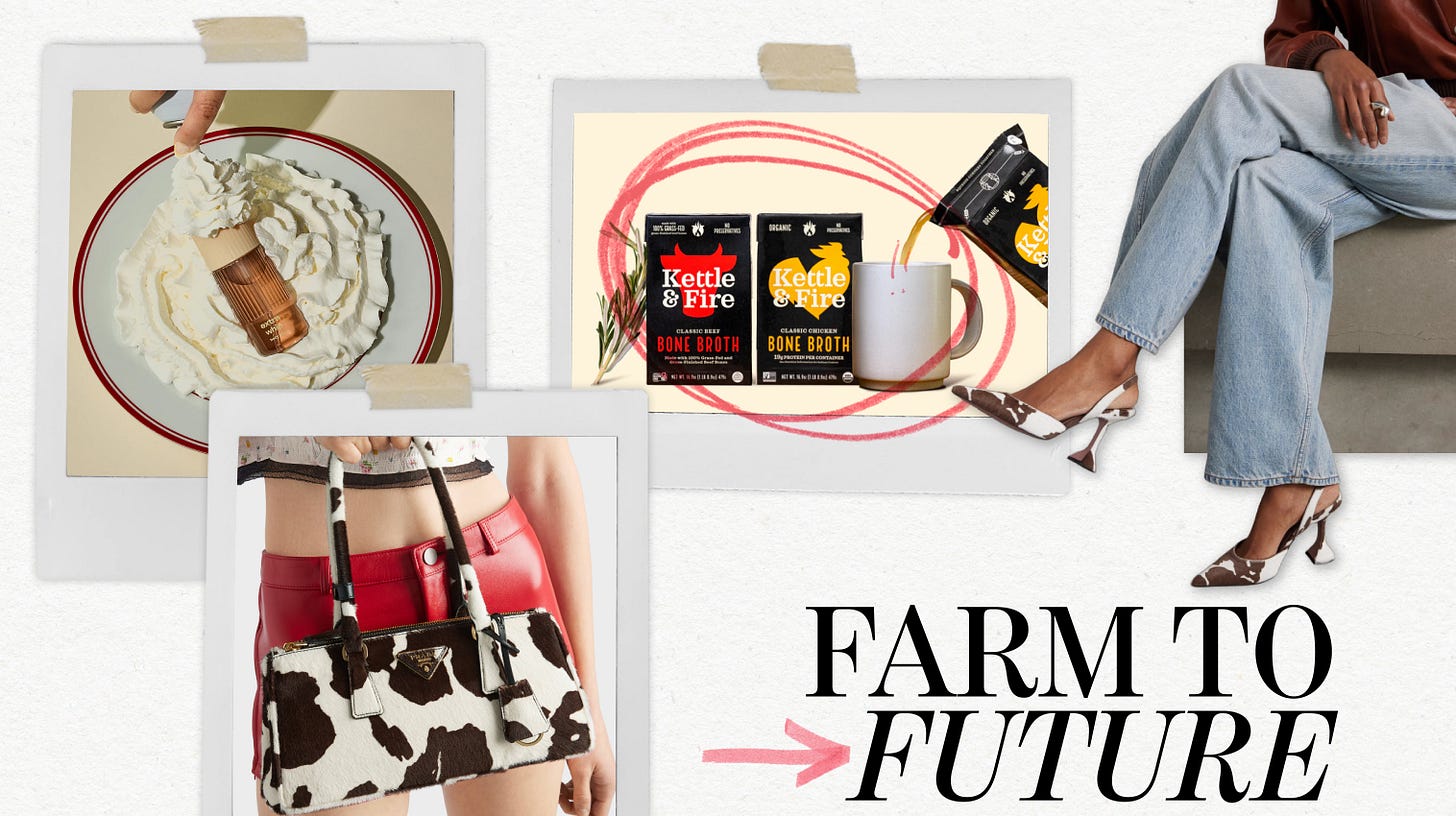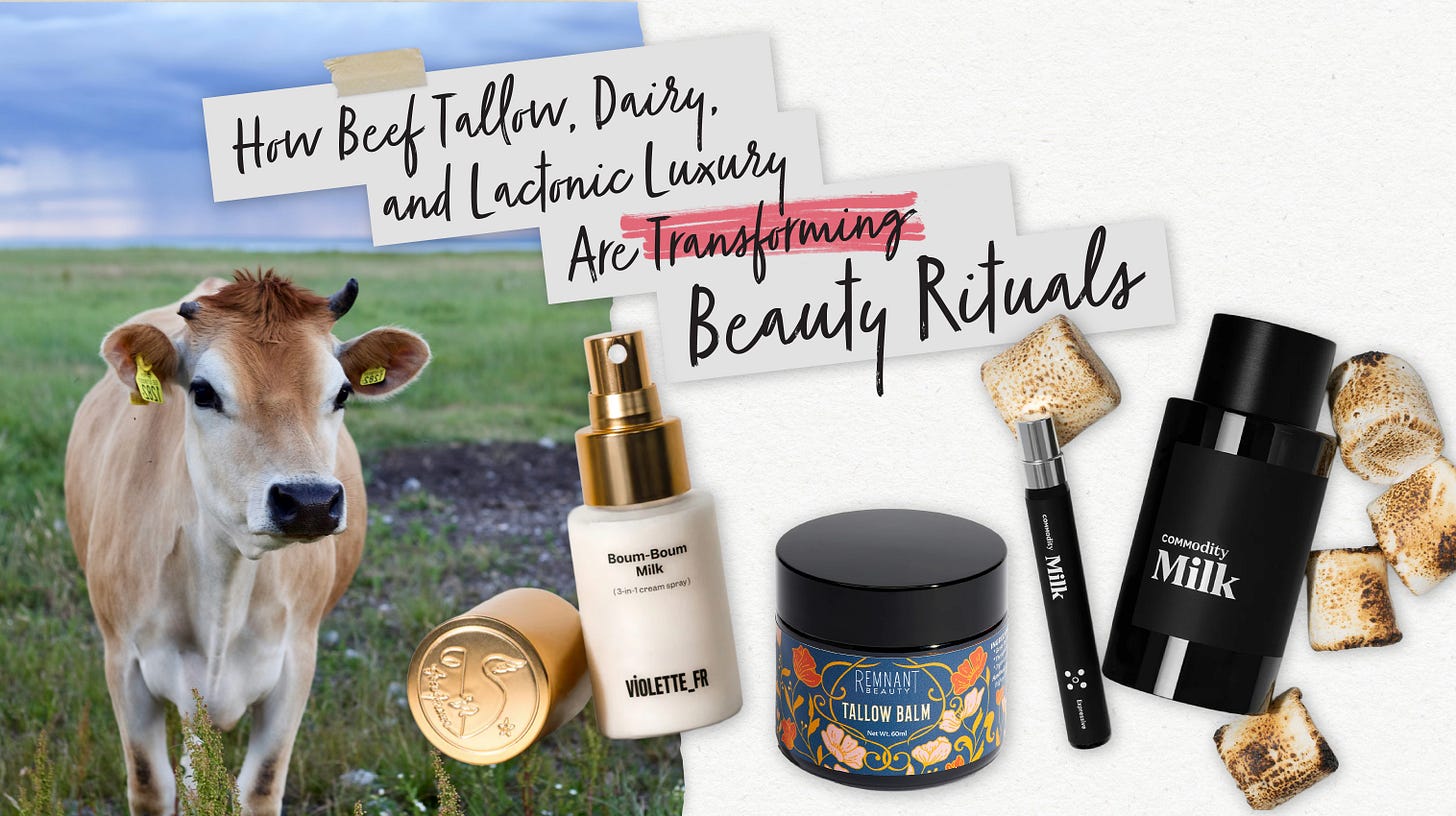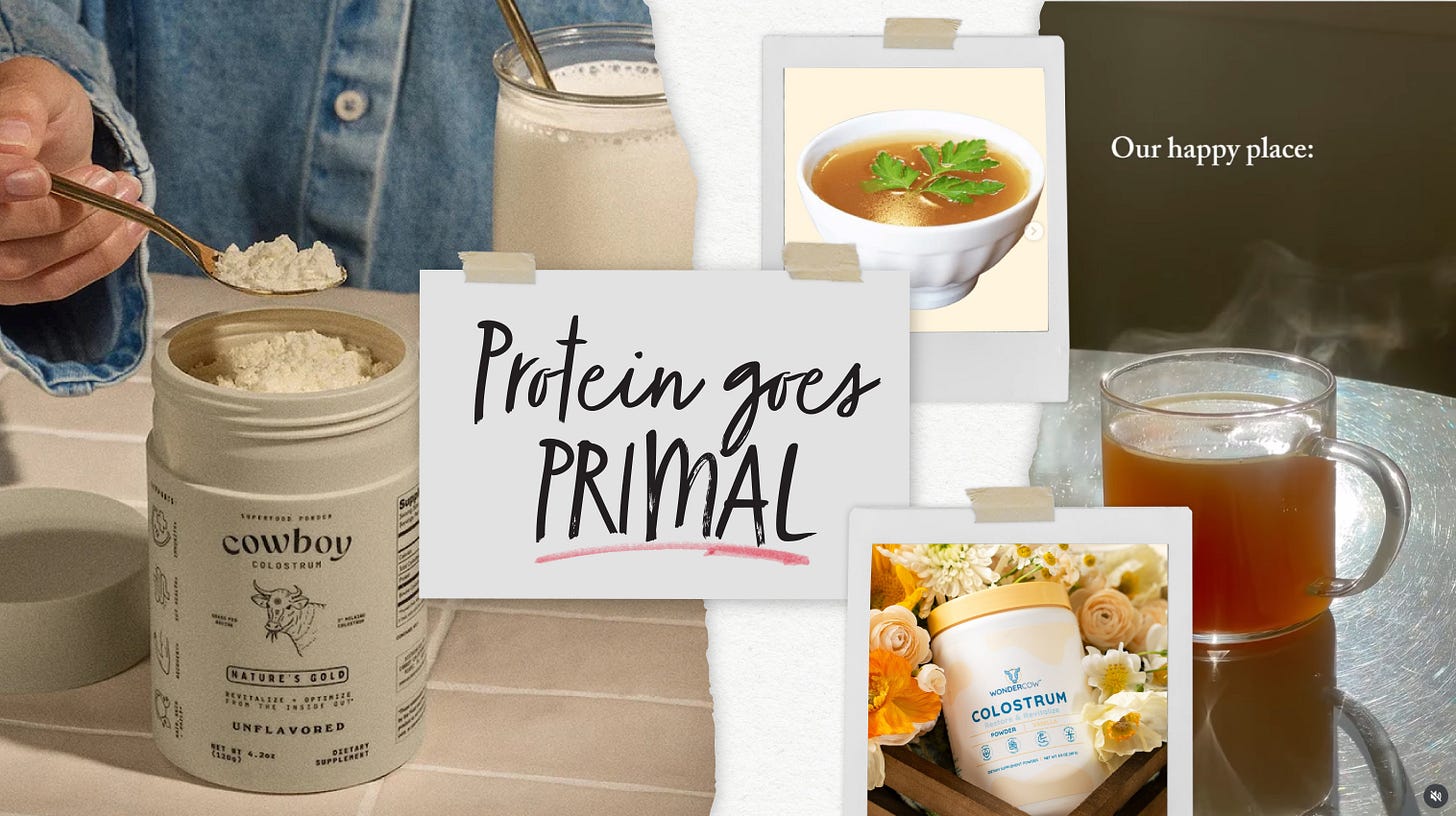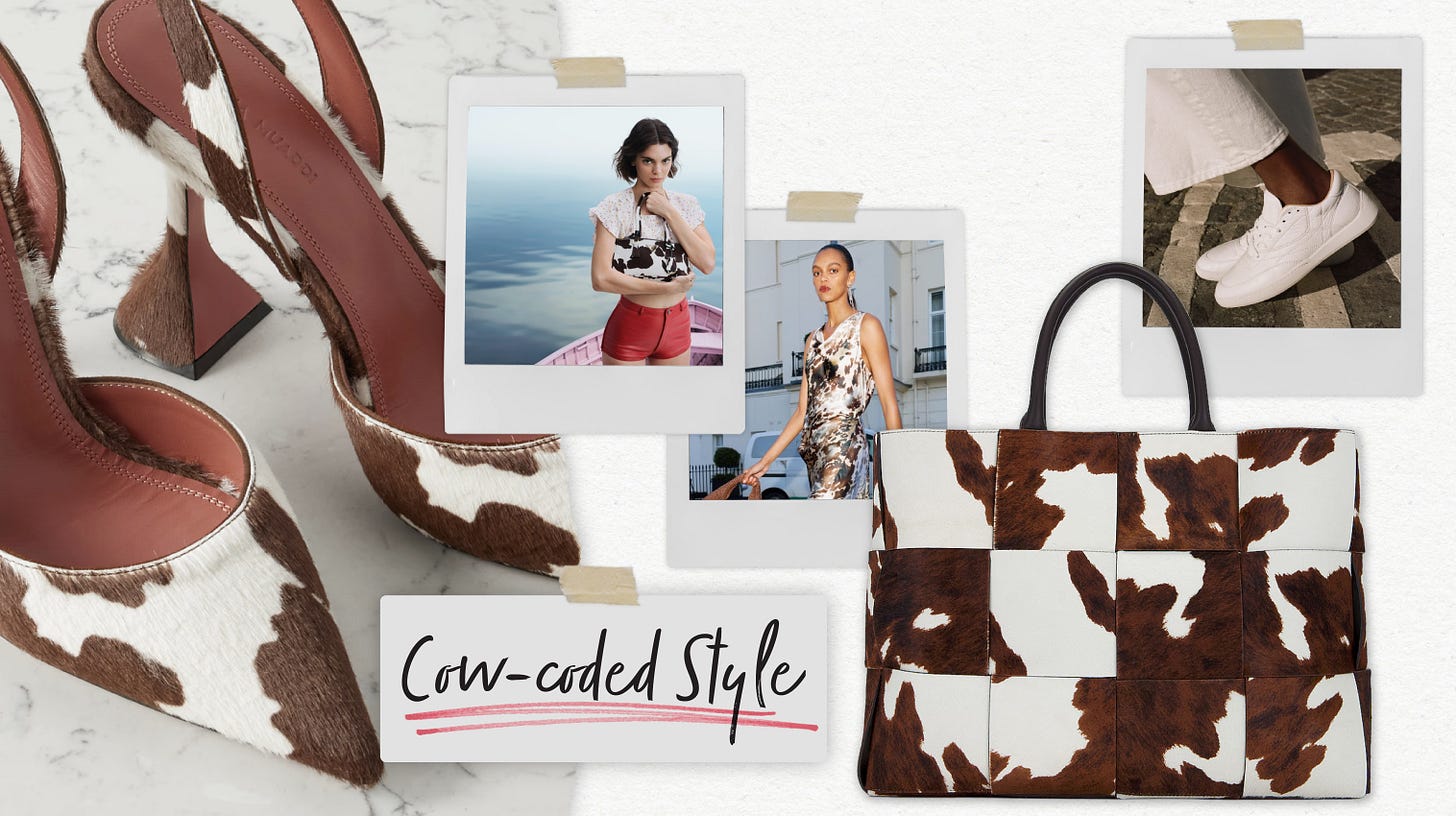Farm to Future: Animal-Based Practices Transform Beauty, Wellness & Fashion
From nourishing skincare to fashion’s sensory shift, animal-based ingredients are redefining beauty, wellness, and style.
Consumers today are rediscovering animal-based beauty and wellness rituals, not as a rejection of plant-based lifestyles, but as a deeper return to time-honored practices. Ancient traditions such as milk baths, historically used to soothe skin conditions like psoriasis, are finding new appreciation for their simplicity, efficacy, and sensory richness. Driven by desires for transparency, authenticity, and products rooted in ancestral wisdom, the farm-to-face approach we first spotlighted in the mid-2000s (then a revival) is now experiencing renewed momentum.
How Beef Tallow, Dairy, and Lactonic Luxury Are Transforming Beauty Rituals
Animal-based beauty is steadily making its way into mainstream skincare and fragrance routines. WGSN’s podcast “Create Tomorrow: Beauty & the Beef – Vegan Reversal in Food & Beauty” describes this movement as a “vegan reversal,” noting that consumers who once favored exclusively plant-based products are increasingly drawn toward ancestral wisdom, primal aesthetics, and simpler, minimally processed alternatives. Spate confirms the momentum, showing searches for “beef tallow skincare” rising by 251.9% year-over-year. Brands such as Remnant Beauty and Béla Nektar build their formulations around beef tallow, a fat naturally rich in vitamins A, D, E, and K. Tallow closely mirrors skin’s lipids, offering barrier repair, hydration, and inflammation reduction benefits.
Dairy, too, is experiencing a notable resurgence. According to Google Trends data cited by The New York Times, searches for whole milk recently surpassed those for oat milk for the first time since 2020, marking renewed consumer interest in traditional dairy. Beauty brands are responding by incorporating genuine dairy ingredients or milk-inspired textures into their products, leveraging creamy, comforting sensory experiences. For instance, Japanese Hokkaido milk, celebrated for its high fat, protein content, and nutrient density, is emerging as a luxurious beauty ingredient, recognized by Elle India as a significant skincare player in 2025.
Beekman 1802’s Milk Drops Probiotic Ceramide Serum and Pure Goat Milk Bar Soap tap into goat milk’s microbiome-friendly, soothing properties, ideal for sensitive skin. Goat milk naturally contains more vitamin A, calcium, and potassium than cow’s milk. Some studies suggest the human body may also absorb minerals from goat milk more efficiently, and the milk contains higher levels of short-and medium-chain fatty acids. Goat milk protein “immunomodulatory” effects may also help regulate the immune system. Similarly, Violette_FR’s Boum-Boum Milk merges toner, serum, and moisturizer into a nourishing, silky formula infused with birch sap and squalane, embodying the luxurious feel consumers seek.
Lactonic fragrances are following suit, capturing dairy’s indulgent sensory appeal. Snif’s Extra Whip layers whipped cream and vanilla, while DedCool’s Mochi Milk blends marshmallow, sweet rice milk, and vanilla bean into comforting aromas. Commodity’s Milk Expressive Eau de Parfum further exemplifies this trend, combining notes of cold milk, toasted marshmallow, mahogany, and tonka bean into a comforting and elegant fragrance experience.
Symrise’s trend brief “The Milky Way to Beauty” and Vogue Australia highlight that this dairy revival signals deeper cultural shifts, reflecting consumers’ desires for regenerative sourcing, artisanal craftsmanship, and rituals grounded in heritage. Consumers are embracing milk not just as an ingredient, but as a meaningful connection to tradition, authenticity, and self-care.
Aligned with this emphasis on transparency and authenticity, beauty brands now openly highlight ingredient sourcing and production practices. Moo Elixir underscores its use of ethically sourced grass-fed tallow in its product messaging. Similarly, Primally Pure formulates skincare from grass-fed tallow, regularly selling out due to consumer trust in its holistic, sustainable sourcing rooted in regenerative agriculture—a practice the brand describes as “working in harmony with nature to leave the land better than we found it.”
Nutrition and Functional Ingredients: Protein Goes Primal
Animal-based wellness brand Cowboy Colostrum partnered with health hotspot Erewhon and celebrity athletes Cooper Kupp and D’Angelo Russell to launch performance-focused colostrum smoothies. Russell’s “Good To Great” smoothie blends Cowboy Vanilla Colostrum with Koatji Organic Barista Oat, Koji Milk, spirulina, collagen, and antioxidant-rich fruits for optimal recovery and nutrition.
Whole-animal ingredients such as collagen, bone broth, and tallow are making a comeback as everyday wellness staples. Brands such as WonderCow and Ancestral Supplements have introduced products incorporating colostrum, beef liver, and bone marrow into consumers’ daily regimens, achieving mainstream status beyond niche markets.
Bone broth, recast as a foundational wellness tool, aligns with consumer interest in post-exercise recovery and beauty-from-within. Brands including Kettle & Fire, Serenity Kids, and Brodo highlight bone broth’s naturally occurring collagen and amino acids. According to WWD, consumers now associate these protein-rich animal ingredients with effectiveness, simplicity, and authenticity rather than restriction. Nutrient-forward, primal diet-inspired products are becoming cornerstones of visible wellness and vitality.
Celebrities are amplifying animal-based trends in food and snacks as well. For example, Khloé Kardashian recently launched Khloud, a popcorn brand that incorporates protein derived from dairy, through a unique blend called “Khloud dust,” featuring milk protein and seasoning. This launch further highlights mainstream consumer interest in nutrient-rich, animal-derived ingredients, emphasizing primal-inspired nutrition and sensory indulgence.
Cow-Coded Style and Tactile Textures
Animal themes and textures also permeate fashion and design. According to Elle, cow print is emerging as the key neutral of Summer 2025, influenced by cultural moments like Beyoncé’s Cowboy Carter era. Prada's "Days of Summer" campaign featuring Kendall Jenner with the brand’s Galleria cow print bag highlights the trend's presence in accessories. Amina Muaddi's "Marine cow-print pony hair knee boots" and slingback pumps showcase the trend's reach into footwear. Consumers embrace rugged, authentic materials like vegetable-tanned leather, raw denim, and chunky knits, reflecting a shift toward durability and storytelling. According to Who What Wear, Bottega Veneta's "Intreccio Spotted Calf Hair Borsa" and Tod's "Cow-print Pencil Skirt" offer examples of cow print in apparel..
Consumers are gravitating back toward genuine leather. According to Vogue Business, there’s a growing shift away from synthetic “pleather” toward durable secondhand options and sustainably sourced vegetable-tanned leather. Designers like Gabriela Hearst (who just released the brand’s first ethical Ohio sneaker) believe in ethical sourcing and by-product utilization. She rejects the notion of "vegan" leather as a superior alternative, emphasizing that leather from responsibly raised animals is a byproduct of food production. Her brand implements measures like the EON platform, sources from her family ranch in Uruguay. It works with organizations like INVERSA Leathers, which uses invasive python for exotic leathers, to address environmental concerns.
Why It Matters
The revival of animal-derived ingredients in beauty, wellness, and lifestyle represents more than nostalgia. It’s a shift toward simplicity, authenticity, and mindful consumption. Ingredients like beef tallow, dairy, and colostrum deliver proven skincare and wellness benefits while reconnecting consumers with ancestral practices and sensorial richness. Today’s shoppers aren’t confined to a single ideology but blend traditional wisdom with contemporary science, seeking products that align with their values and deliver genuine results. For brands and industry experts, this revival highlights transparency, sustainable sourcing, and meaningful storytelling—proving animal-based rituals are not relics of the past, but integral to beauty and wellness in 2025 and beyond.







